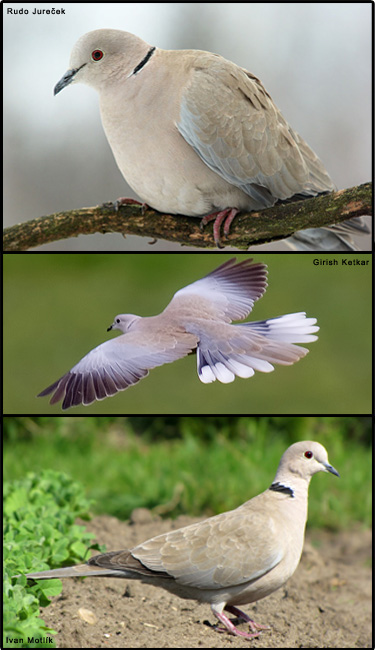Eurasian collared dove (Streptopelia decaocto)
 Description: Introduced to the United States via dispersal of young individuals over long distances.
Description: Introduced to the United States via dispersal of young individuals over long distances.Identification: Mostly gray with white upper body, black collar on the back of its neck, slender black bill, deep red iris of the eye; broad, squared tail with black base and dark red legs and feet.
Habitat: Native to Asia, Europe and Northern Africa. Found on farmlands, open country, and wood edges in suburban and urban areas. They appear to thrive in areas with a combination of open ground and trees.
Reproduction:
Impact and Damage: Populations spread rapidly and compete with native species. Eurasian Collared Doves are considered a pest in agricultural areas, especially in areas that grow grains. This species can carry West Nile Virus.
Similar species: Mourning dove, which is smaller in overall size, no black collar, blue ring around eyes, black spots on back, pointed tail.
Monitoring and rapid response: Hunting can be effective in managing their population. Credits: The information provided in this factsheet was gathered from Michigan Department of Natural Resources.
Individual species images that appear with a number in a black box are courtesy of the Bugwood.org network (http://www.invasive.org). Individual photo author credits may not be included due to the small display size of the images and subsequent difficulty of reading the provided text. All other images appear courtesy of Google (http://images.google.com).
Common Name: | Eurasian collared dove |
Scientific Name: | Streptopelia decaocto |
Family: | Columbidae (Pigeon and Dove) |
Habit: | Birds |
